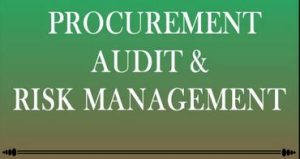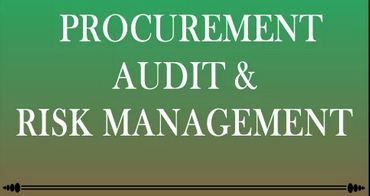Role of International and Local Standards in Procurement Audits
International Auditing and Assurance Standards Board (IAASB) is an independent standard setting body that serves the public interest by setting high-quality international standards for auditing, assurance, and other related standards, and by facilitating the convergence of international and national auditing and assurance standards. In doing so, the IAASB enhances the quality and consistency of practice throughout the world and strengthens public confidence in the global auditing and assurance proffession.
The IAASB issues a number of other international standards, in addition to ISAs. The table below sets out these standards, including ISAs, and when they are to be applied.
| Type of standard | When applied |
| International Standards on Auditing (ISAs) | In the audit of historical financial information |
| International Standards on Review Engagements (ISREs) | In the review of historical financial information |
| International Standards on Assurance Engagements (ISAEs) | In assurance engagements other than audits or reviews of historical financial information |
| International Standards on Related Services (ISRSs) | On compilation engagements, engagements to apply agreed upon procedures to information and other related services engagements |
| International Standards on Quality Control (ISQCs) | For all the above services |
Source: BPP (2009) ACCA study text
The following are the main roles of international and local standards in procurement audits:
- Establishing ethics governing all assurance engagements carried out under the standards.
- Setting out quality control principles for all assurance engagements including audits conducted under the standards.
- Developing other policies and procedures of conducting other assurance activities in addition to the audits.
- Providing guidance to the auditor on how to plan perform and complete their engagements.
- Minimize liabilities and risk exposure to the firms on civil and criminal offenses.
- To provide framework through which auditing can be done
- To provide minimum level of performance to which auditors must conform
- To ensure auditing work complies with certain minimum standards
- To increase the confidence of users of procurement audit
- To reduce incidences of audit failure by also reducing the levels of audit risks
- Standards provide a benchmarking by which the quality of audit work can be measured.
Role of international and local standards in procurement and supply chain risk management
Standards examples
- ISO 31000: 2009
- ISO 28000: 2007
The following are the role of international standards in management of procurement and supply chain risks
- Examination of an organization’s use of universal principles and generic guidelines for effective risk management that have been developed by risk management experts.
- Establish a framework and a systematic approach to risk management, albeit that the international standards have to be applied by the organization to its own business situation in the identification of key risk management activities in the organization, including the development of policies, risk assessment, the identification of responsibilities, the allocation of resources necessary for risk management, communication methods, and training.
- Avoidance of the need for the organization to develop its own standards, thus saving time and ensuring that all aspects of risk management have been addressed.
- Integration of processes for risk management into the organization’s overall systems for the planning, monitoring and control of corporate governance.
- Certification of the organization’s risk management policies and practices through audit by independent Certification Bodies provides assurance for the organization itself and for clients of their robustness.
- International standards normally require the organization to undertake its own regular audit and review of the systems in place, leading to continuous improvement.

